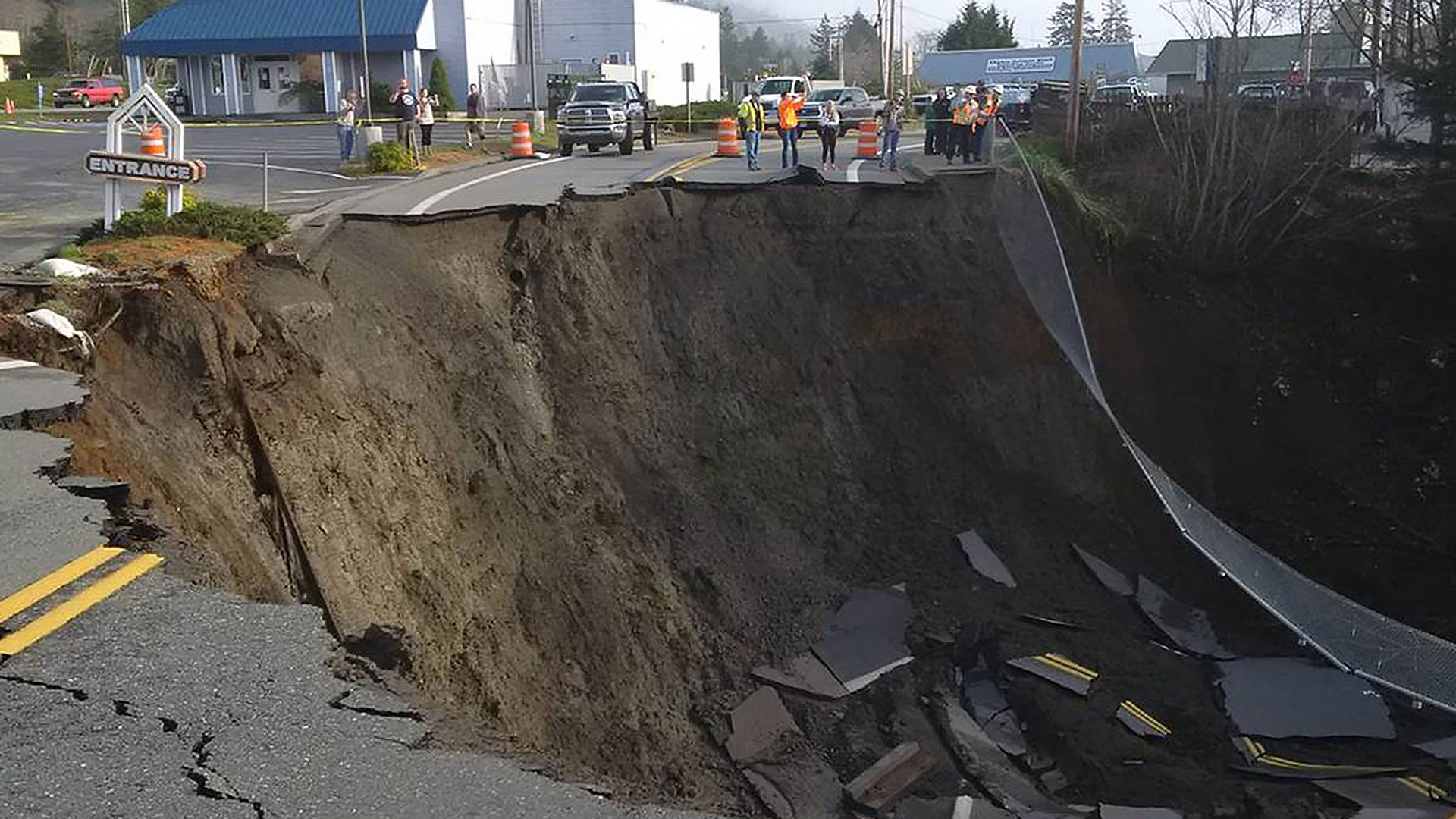

As a child, I was cursed with terrible teeth enamel, which meant I spent most of my youth at the dentist. I was reminded of this when I saw the picture of Oregon’s most recent sinkhole, which destroyed a section of Highway 101. My first thought? This part of the highway, near the California border, is going to need a very, very large “dental crown.”
The causes behind rotting teeth and sinkholes are oddly similar. Sugar rots teeth; acidic rain creates sinkholes. Sinkholes, like tooth decay, occur in different areas and much depends on the type of rock beneath the earth’s surface. For a sinkhole to happen, you need two ingredients: a water soluble rock (limestone, carbonate rock, salt beds) and an acidic solution (typically rainwater or groundwater).
Acidic rainwater essentially decays and washes the sub-surface rock away. Then, when the outside pressure gets to be too much, the surface of the earth collapses like the enamel of a problematic tooth.
In Harbor, Oregon, heavy rainfall washed away the sub-surface rock rapidly, causing this large sinkhole. When sinkholes are 50-70 feet deep, like this one, they are called cover-collapse sinkholes. In these, the top cover remains intact until it can’t support itself anymore and collapses.
Just like cavities, sinkholes are unpredictable and can take years, even decades, to form.
Luckily, no one was hurt at this latest sinkhole (and related landslide), although scads of folks must have been delayed. Wonder if anybody missed their dental appointment.